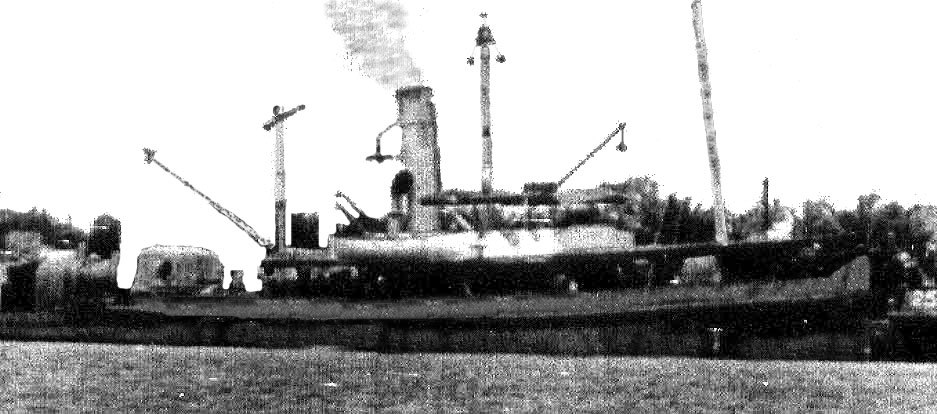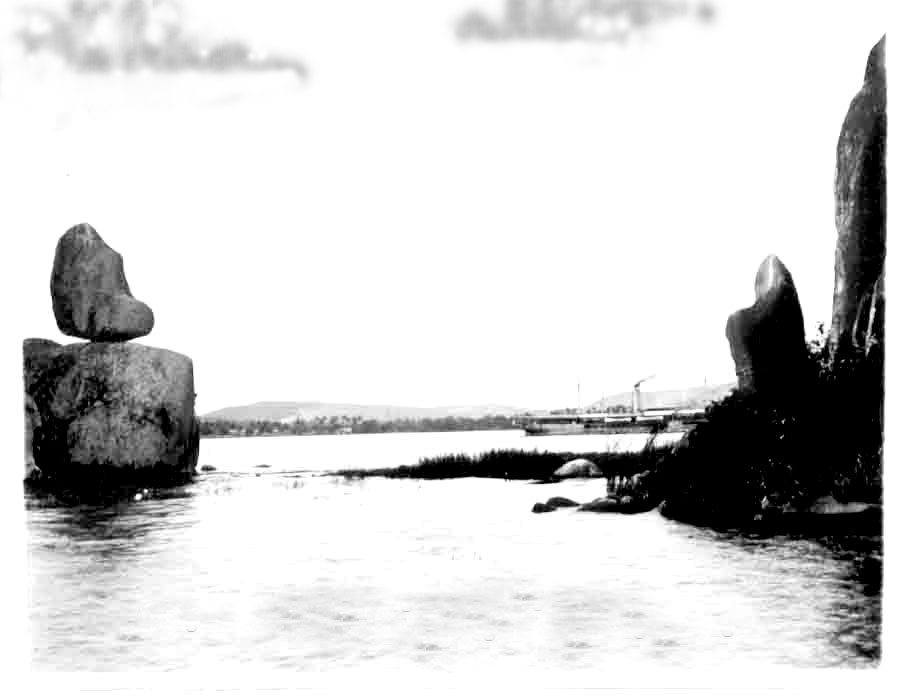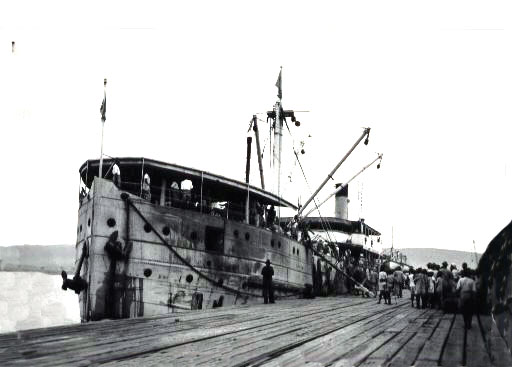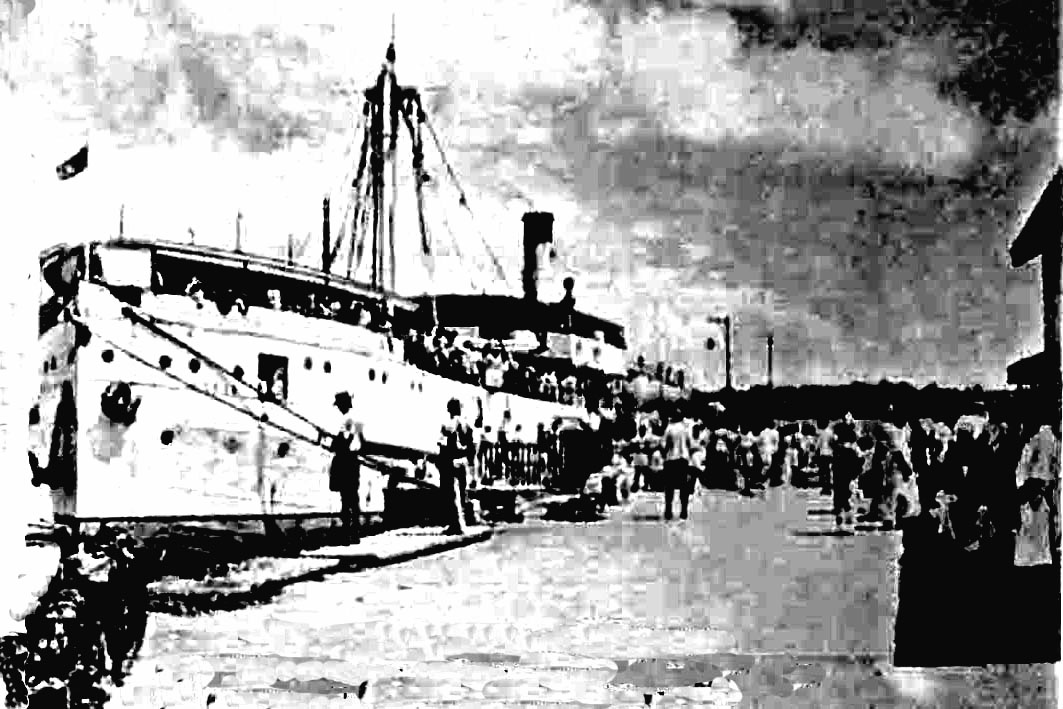17 Usoga and Rusinga
Usoga and Rusinga were two lake steamers which carried passengers and cargo on the lake. There were two weekly services around the lake. The Rusinga started from Port Bell in Uganda. It went to Kisumu, Musoma, Bukoba and Mwanza and arrived on Mondays. The Usoga commenced from Kisumu but it went the opposite way arriving at Mwanza first, and then it did the other ports. It arrived on Saturdays.
The days the steamers arrived were very exciting as then the port came alive with a great deal of activity. Watching the ships arrive and moor was quite fascinating. The steamer was first sighted about two kilometers away as it rounded the heads, which lead into the bay. Always a group of well-known local punters gathered at the fore of the pier and bet on the time from the sighting to the mooring, mooring being the first rope made fast to the bollard. The time varied according to wind, the choppiness of the water and the hauling in of the mooring ropes. As the steamer slowed to approach the pier the ‘telegraph’ bell rang out. The screw churned white foaming water, which eddied around, swirling flotsam and debris. On the foredeck, the officers, who were all British and in white naval uniform, supervised the native crew.
A crewman stood on the forward cargo hatch with a finger thick rope, the heaving line, coiled in one hand and with a round weighted end in the other. His performance was quite crucial to the punters because the timing of the mooring depended on the accuracy of his throw. It was this line by which the shore men hauled in the thick rope, the mooring line. As the steamer nosed in slowly towards the pier he swung the weighted end overhead and threw it to the waiting shore men. If he missed there was a great to do among the punters. As soon as the heaving line landed on the pier, the pagazies, the pier gangers, began to haul it in, guided by the sarang, the gang boss.
The sarang called out, harambe, and the pagazies answered heh. “ Harambe! Heh. Harambe! Heh. Harambe! Heh...” They chanted as the mooring line, which was slowly fed off the winch, was hauled in hand over hand and looped over a bollard. The winch then reversed and very slowly brought the steamer alongside to gently bump the tyre buffers.
When it was made fast both fore and aft the ship crane raised two gangplanks into place. The first and second class passenger disembarked off the first class deck. The deck passengers who were all Africans came ashore from the deck accommodation well in front of the cargo hatches.
The cargo hatches were opened and the ship crane, with the crank hissing steam, the hawsers, the couplings, and hooks clanging, deposited net full of cargo on the pier. The sarang stood on the cargo deck and guided the crane driver with a variety of hand signals, as the crane driver had no view of the pier or the hatches. He also called out various moves for the crane driver and the pier gang in a singsong fashion.
“Leta… Leta, leta, leta. Bring it…Bring it, bring it, bring it,” he sang to the crane driver as he flicked his fingers. “Teremusha... teremusha... Nchini, nchini, ho… aap. Lower it… Lower it... Down, down, sto...op,” and the hand signals accompanied all his calls.
Then to the shore gang he called out, “Fungua! Fungua upesi! Chopu, chopu... Fanya haraka, fanya haraka. Open it! Open it quickly! Chop, chop... Hurry up, hurry up.” His performance came on with an even greater gusto, if the ship’s officer was on the cargo deck. Even if the gangs worked at full pace, he shouted a few cutting remarks at them.
"Pumbavu... Idiots... Hamuna bongo... Have no brains... Inua, inua! Lift it, lift it!” He yelled out then turned to the officer and saluted him. The gangs responded by doing a clapping dance on one leg, then turning towards him they raised their arms and yelled, m.a.f.u.t.a... O.i.l... Then in the midst of loud laughter they resumed work.
As soon as the net was undone the gangs loaded the bales, boxes, drums, timber, gunny bags of rice, different produce, and other cargo on their backs, singly or in tandem. With small but fast steps they ran up the ramp of the cargo sheds and deposited their loads in it to be stacked by another group. The heavily laden pagazies had a different chant as they hurried into the sheds. “Haya khabadari, khabadari... Now careful, careful...” Thus they called out to persons in their way.
The locomotive doing shunting along the cargo sheds puffed, hissed and whistled as it moved up and down. Brakes squealed and the couplings clanged as the bogies were connected. It shunted the bogies alongside the filled cargo sheds. From these the gangs brought out their loads and filled the bogies. Some of them who carried bags of flour looked rather funny half covered in white powder, their black sweat covered bodies, in stark contrast in the strong bright sunlight.
The off-loading and loading continued through the day for the steamer sailed off at eight in the evening. These steamer trips also provided a special social event for the town folks. Instead of going to the club they met for drinks on board at the open sided rear deck. All the bigwigs of the town, the top businesspersons, the doctors, the lawyers and the magistrates, together with the P.C., the D.C. the police chief, the bank bosses and staff, and the headmasters and some teachers, thronged the deck till departure time. The first and second-class passengers, all non-Africans came aboard and joined their friends in a parting drink.
On the deck forward of the cargo holds a great activity took place. All the Africans traveled as deck passengers as it was the cheapest. In addition, it was politically incorrect and unacceptable for an indigenous person to travel in the upper classes. As there were no fixed places on deck accommodation, everybody rushed with their bundles, baskets and small wooden trunks to secure a place. Here protected only by an awning and canvas along the deck rails they traveled to their various tribal homes along the lake regions or into the interior.
Ten minutes before sailing time there was a long throaty blast on the whistle, indicating to the revelers on board to get ashore. As they streamed down to the pier, the gangplank to the fore deck was lowered to the pier, followed by the one mid-ship. The rope winch slackened the fore mooring rope and the looped end lifted off the bollard. Very gently, the ship backed along the pier. This slackened the aft mooring, which too was lifted off the bollard, and dropped in the water and winched in by the ship.
As the ship cleared the pier she swung to the starboard in a gentle curve, all the lights reflecting on the water. Then came two long bhoorrum, bhoorrum, blasts as she swung out towards the heads, her mast and rear deck lights visible. After a while these became dimmer and finally disappeared as she swung round the eastern head.
Besides these two streamers there were powerful tugboats which pulled a brace of lighters. These tugs, Kavirondo and Ruvuma, also came twice a week, pulling four to six lighters, tied on either side of the tug. The lighter were moored two or three abreast and while these were worked on, the tugs went off to other ports. It took several days to work the lighters as these had hand operated cranes with which to work the very large hold. A wonderful sight these lighters were tied broadside to the tug, three on each side. As they made for the heads against the background of pale blue sky with fluffy white clouds hovering high up, the squat tug and with lighters on either side looked like a giant fat bug floating on the water.
S.S. Rusinga still operates the round the lake service in 2005 but it is now privately owned and run.
 |
1940s photo of the tug Kavirondo at Mwanza |
Usoga ready to sail. The deck passengers look on. The gangplank is removed. The crowd farther along below the lamp post are friends and relatives of 1st & 2nd class non-African passengers. The pikipiki, motorbike in left corner belonged to Dhall Singh the snake man.
Photo: Dali Rustomji


